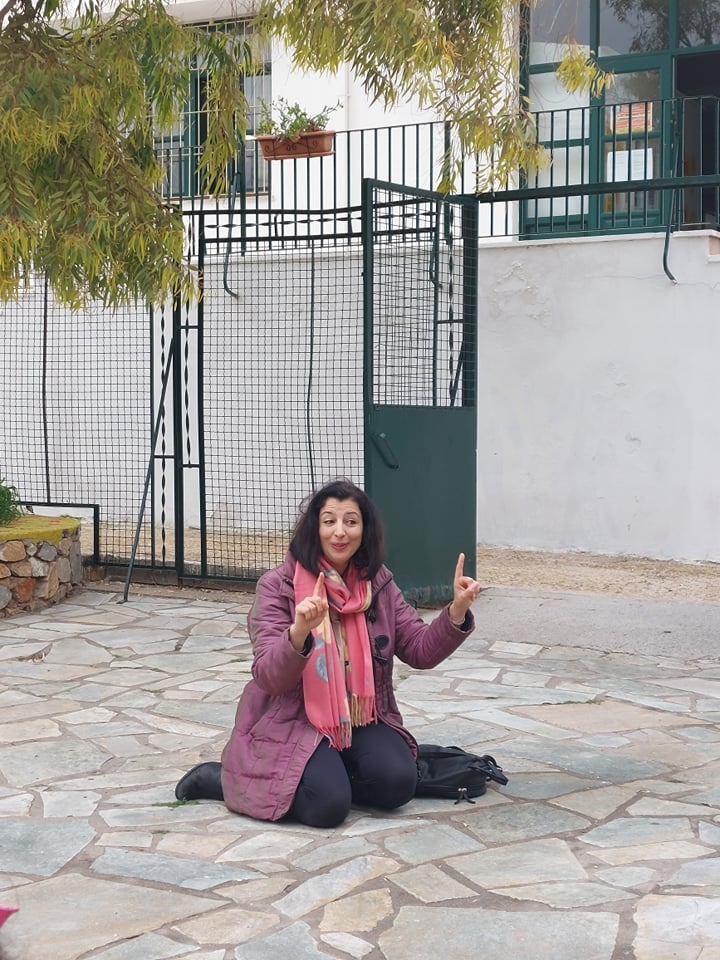I am by no means an expert on learning difficulties, nor am I a rigid academic claiming that I can give you all the necessary tools to deal with them. What I am is a dedicated, empathetic teacher with great love for my students, especially the most challenged ones.
Unfortunately, in the not-so-distant past –even two decades ago, when I first started getting involved with education- we lacked awareness on such matters. In fact, most of us educators used to be so oblivious to the concept of learning difficulties, we wouldn’t recognize them if they weren’t screaming in our face! It saddens me to say that in retrospect, I realise I should not have been as strict with certain students and that I should most definitely have been more encouraging towards them.
Working with kids who were once considered lazy but who are now proven to be facing challenges in learning “the traditional way” has been the most useful realisation I have had in my 20 years of experience in teaching foreign languages. When I did become aware of the seriousness of the matter and that in fact there were ways, I could try to make their lives easier and help them navigate through their difficulties, I attended many webinars and took courses so as to become familiar with the nature of the different kinds of difficulties and the most practical ways to pass practical techniques over to the students that were still under my care. Not all courses were helpful and not all experts were what they claimed to be but one can always find the silver lining if they look hard enough. And some courses really were quite practical and have helped both me and my students enormously.
It is common knowledge that no solution works for all. We must be ready for trial and error, willing to discard practices that do not work for specific cases but simultaneously have enough aces up our sleeve to try out an entirely different approach according to individual needs. It is therefore from hands-on experience that I would like to share with you a few tips, tricks and strategies that might work with many different cases:
- Using a ruler to help students know where exactly they are while reading. I have seen some ready-made ones for sale but surely, it’s very easy to make one by using a transparent ruler and covering up a square with coloured tape, leaving a gap in the middle so as to isolate the part of the text one reads.
- Give them sufficient little breaks from one exercise to the next.
- Incorporate some physical movement in class. E.g. when they are watching/listening to a song, allow them to stand up and dance or be silly.
- Use stories! I cannot stress the importance of this technique enough. It helps them learn vocabulary and syntax almost effortlessly, especially if there are rhymes or little songs they can learn by heart. Moreover, it creates a sense of connection among the ones that decide to share a story and a sense of community in the classroom.
- In low levels, use copy notebooks with the half upper page blank for drawing the words.
- Once they have acquired some reading skills, encourage them to dramatise small parts of the dialogues for their classmates’ entertainment and their own.
- Create and play games like Taboo or miming, even board games in English according to their level.
- Allow them to hold noiseless fidgeting toys that help them concentrate and relieve stress.
- If space and finances permit it, substitute chairs with exercise balls –just make sure they are the right size as ideally, their legs should be in right angle. If this is not possible, put a wide rubber band in the front legs of the chair so they can fidget with their feet. This might eliminate the need to stand up every now and then.
- Minimise the use of technology. It’s ok to use some, it’s certainly helpful and they enjoy it. We just need to make sure we do not cross over to the other side (take Sweden’s example) and then have to retreat our steps to regain balance. When writing a rule on the board or giving them homework, make sure to use a different colour marker for each different item. This will refrain them from mixing the tasks as sometimes the lines seem to mingle in their eyes.
- When it’s time for the student to try sitting a certificate exam, there are so many options! Do give each one a try until you find what suits their individual needs best.
This is what I‘ve found to work in many cases. Some of it might be hard to use in a classroom and most likely easier for individual or small group classes. But we must keep an open mind and try to find what works best. So, take your pick and please, do try. Sometimes results are simply astonishing!
It is not the end of course. As education evolves, our students with learning difficulties help us take our field a step further into the future, turning classes more student-centered so as to make education better for all parties involved. These students are an extremely useful resource and so willing to help us help them. All they need is to feel they are heard and understood. All students stand a better chance to learn more effectively if they feel they are loved and respected. We work better with encouragement and this may be the only rule that applies to all!

